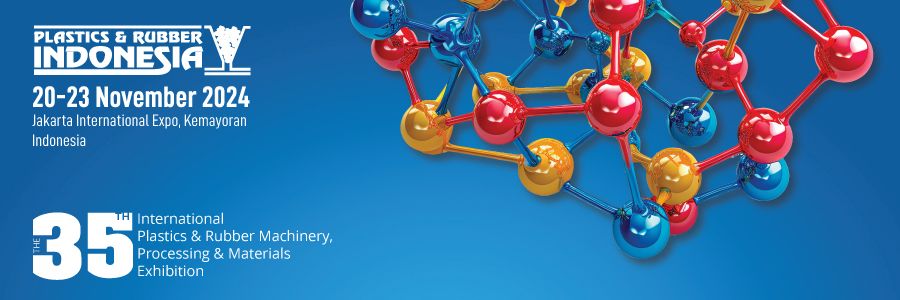Unlocking the Benefits of Classy Liquid Silicone Rubber Injection Molds
Time:
2025-05-03
Unlocking the Benefits of Classy Liquid Silicone Rubber Injection Molds
Table of Contents
- 1. Introduction to Liquid Silicone Rubber (LSR)
- 2. What is Liquid Silicone Rubber?
- 3. Benefits of Classy Liquid Silicone Rubber Injection Molds
- 3.1 Exceptional Durability
- 3.2 Versatility in Applications
- 3.3 Precision Engineering and Design
- 3.4 Cost Efficiency
- 4. Applications of Liquid Silicone Rubber Molds
- 5. Considerations When Choosing LSR Molds
- 6. Maintenance of Liquid Silicone Rubber Molds
- 7. The Future of Liquid Silicone Rubber in Manufacturing
- 8. Frequently Asked Questions
- 9. Conclusion
1. Introduction to Liquid Silicone Rubber (LSR)
In recent years, **Liquid Silicone Rubber (LSR)** has emerged as a preferred material in various manufacturing processes, especially in the production of injection molds. Our exploration into LSR reveals its unique properties, advantages, and an array of applications that make it an indispensable asset in contemporary manufacturing.
2. What is Liquid Silicone Rubber?
Liquid Silicone Rubber is a high-performance elastomer known for its flexibility, resilience, and high-temperature stability. This silicone material is liquid at room temperature, allowing it to be easily injected into molds. Once cured, it transforms into a durable, flexible, and inert material compatible with various industries, including healthcare, automotive, and consumer goods.
3. Benefits of Classy Liquid Silicone Rubber Injection Molds
Classy Liquid Silicone Rubber Injection Molds offer numerous advantages that set them apart from traditional molding materials. Below are several key benefits:
3.1 Exceptional Durability
One of the standout features of LSR is its **exceptional durability**. Unlike other materials, LSR can withstand extreme temperatures, from -60°C to 250°C. It retains its shape and properties even under strenuous conditions, making it ideal for applications that require longevity and reliability. Its resistance to UV light, ozone, and various chemicals further enhances its durability, ensuring a prolonged lifespan for products manufactured with LSR molds.
3.2 Versatility in Applications
**Versatility** is another significant benefit of Classy Liquid Silicone Rubber Injection Molds. This material can be tailored to meet specific requirements, catering to a wide range of applications. From automotive parts to medical devices, LSR's adaptability allows manufacturers to create products in various shapes, sizes, and functionalities. This versatility extends to colors and finishes, enabling designers to achieve the desired aesthetic while maintaining functional integrity.
3.3 Precision Engineering and Design
LSR molds allow for **precision engineering and design**, a critical factor in modern manufacturing. The injection molding process can produce intricate designs with tight tolerances, ensuring that each part fits seamlessly within its intended assembly. This precision not only enhances product quality but also reduces the need for secondary processing, saving time and costs in production.
3.4 Cost Efficiency
Investing in Classy Liquid Silicone Rubber Injection Molds can lead to significant **cost efficiencies**. The ability to produce complex parts in a single molding cycle reduces the need for multiple components, minimizing material waste. Additionally, LSR's durability translates to lower replacement and repair costs over time, making it a cost-effective choice for many manufacturers.
4. Applications of Liquid Silicone Rubber Molds
Liquid Silicone Rubber Molds are utilized in a multitude of industries, reflecting their adaptability and performance. Here are some prominent applications:
4.1 Medical Devices
LSR is widely used in the medical industry for items like surgical instruments, seals, and gaskets. Its biocompatibility and sterilization capabilities make it a safe choice for direct contact with patients.
4.2 Automotive Components
In the automotive sector, LSR molds are employed for manufacturing parts like grommets, seals, and connectors. Their heat resistance and durability are essential for components exposed to high temperatures and various environmental factors.
4.3 Consumer Goods
From kitchenware to toys, LSR molds are increasingly used in creating consumer products. Their flexibility and ease of cleaning make them popular choices for household items.
5. Considerations When Choosing LSR Molds
When selecting Liquid Silicone Rubber Injection Molds, several factors should be taken into account:
5.1 Material Properties
Understanding the specific properties of LSR, such as hardness, color options, and thermal stability, is crucial for selecting the right material for your application.
5.2 Manufacturing Process
The manufacturing process can significantly impact the quality of the final product. It's essential to choose a reputable manufacturer with experience in LSR injection molding to ensure optimal results.
5.3 Cost and Budget
While LSR molds can be more expensive upfront compared to traditional materials, the long-term benefits often outweigh initial costs. An analysis of total cost of ownership can help guide this decision.
6. Maintenance of Liquid Silicone Rubber Molds
Proper maintenance of LSR molds is key to maximizing their lifespan and performance. Here are some essential maintenance tips:
6.1 Regular Cleaning
Molds should be cleaned regularly to remove any residue that may affect the quality of the finished product. Using mild detergents and avoiding abrasive materials is recommended.
6.2 Inspection and Repair
Routine inspections can help identify any wear or damage. Prompt repairs can prevent more significant issues and extend the mold's lifecycle.
6.3 Proper Storage
When not in use, molds should be stored in a controlled environment to prevent degradation. Avoid exposing them to extreme temperatures or direct sunlight.
7. The Future of Liquid Silicone Rubber in Manufacturing
The future of Liquid Silicone Rubber in manufacturing looks promising. With advancements in technology, we can expect enhanced formulations that improve properties such as tear resistance and color stability. Furthermore, the growing emphasis on eco-friendly materials and processes will likely drive innovation in LSR applications, making it an even more attractive choice for manufacturers.
8. Frequently Asked Questions
8.1 What are the main advantages of using LSR for injection molding?
The primary advantages include durability, versatility, precision, and cost efficiency, making LSR suitable for various applications across different industries.
8.2 How does LSR compare to traditional silicone?
LSR is liquid at room temperature, allowing for more intricate designs and faster production cycles compared to traditional solid silicone, which typically requires longer curing times.
8.3 Can LSR be used for food-grade applications?
Yes, LSR can be formulated to be food-safe, making it suitable for kitchenware and food packaging applications.
8.4 What industries benefit most from LSR molds?
Industries such as healthcare, automotive, consumer goods, and electronics are among the primary beneficiaries of LSR molds due to their unique properties and capabilities.
8.5 How can I ensure the quality of LSR molds?
Choosing a reputable manufacturer with a proven track record in LSR injection molding, along with regular quality inspections and maintenance, can help ensure the quality of your molds.
9. Conclusion
The potential of Classy Liquid Silicone Rubber Injection Molds is vast and transformational within the manufacturing landscape. Their exceptional durability, versatility, and precision make them indispensable tools in various industries. As we continue to explore and innovate in this field, embracing LSR technology can lead to enhanced product performance, reduced costs, and greater sustainability. By understanding and harnessing the benefits of LSR, manufacturers can unlock new opportunities for growth and success in an ever-evolving market.
RELATED NEWS












